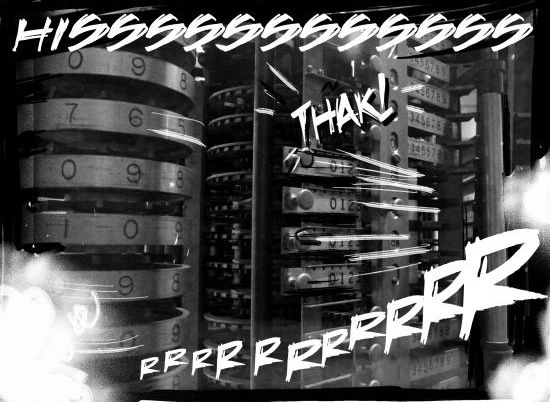Lambda Days 2017 - The First Day
The day kicked off with a Keynote from John Hughes, who provided an energetic introduction to functional programming, recapped some of its history, and explained why it matters, along with Mary Sheeran.
Perhaps the most surprising talk was by Sydney Padua, a cartoonist and animator - an unlikely presenter for a Computer Science related conference. She talked about how a one-off comic, portraying Charles Babbage and Ada Lovelace, turned into a series, and eventually evolved into a very informative graphic novel.
 Lovelace and Babbage Vs. The Economy, Pt 2
Lovelace and Babbage Vs. The Economy, Pt 2
As Padua made more comics, she learned more about the Babbage’s Difference and Analytical engines. While a working Difference Engine exists, in the Computer History Museum in Mountain View, CA, there is no Analytical Engine to use as a reference. Padua ended up recreating the Analytical Engine in 3D Modelling software using technical diagrams as reference, and even animated parts of the engine. Seeing the intricate detail and huge scale of the engine was extremely impressive, especially considering how little memory and computation power it would have had, compared to modern technology.
With a majority of the day left, it was time to delve into some technical talks. Unfortunately these were found wanting. Perhaps my choice of tracks was poor, as I avoided the Research track for fear of everything going over my head. The talks I attended were mostly a mix of basic FP concepts or marketing/recruitment material under the veil of a “How we solved X” type presentation.
There were a few talks which stood out, such as “Free the Conqueror!” by Tamás Kozsik, “Implementing Event-Driven Microservices Architecture using Functional programming” by Nikhil Barthwal, and “Keeping the flow going: Data-flow oriented workflow systems” by Annette Bieniusa.
Tamás Kozsik discussed a tool he is working on which refactors Divide and Conquer algorithms to be better suited for parallelisation, using static analysis. This is done by normalising such functions into five distinct parts;
- Check if the current element is the base case,
- If so, solve the case,
- Otherwise divide the search space
- Map the solve function over each half,
- Combine the results
This normalised form lends itself to easy parallelisation as each leaf can be solved in parallel.
Microservices are all the rage at the moment, and it seems FP is gaining traction. Nikhil Barthwal discussed how Jet.com combined the two concepts, building their infrastructure completely on microservices and F#. He drew parallels between FP and microservices, explaining that there can be pure and impure microservices (loosely speaking, e.g., logging isn’t considered impure), microservices typically don’t have state, but rather react to events - similar to how immutable data is a collection of states. These features makes parallelising microservices fairly straight forward. Unfortunately he didn’t elaborate much more than that.
In her talk, Annette Bieniusa described a method of modelling tasks (forms and actions) using Kleisli Arrows, which John Hughes discussed in a paper. Not having been around academia much, it was interesting to hear John Hughes ask questions about the concept.
Attending Lambda Days 2017 has reminded me how amazing Functional Programming is. Listening to some iconic people in the field, such as John Hughes, was really inspiring. The amount of attendees was comforting, showing how popular the paradigm is becoming. If you’re not writing applications in a functional language, you’re more than likely using a significant amount of FP features regardless.